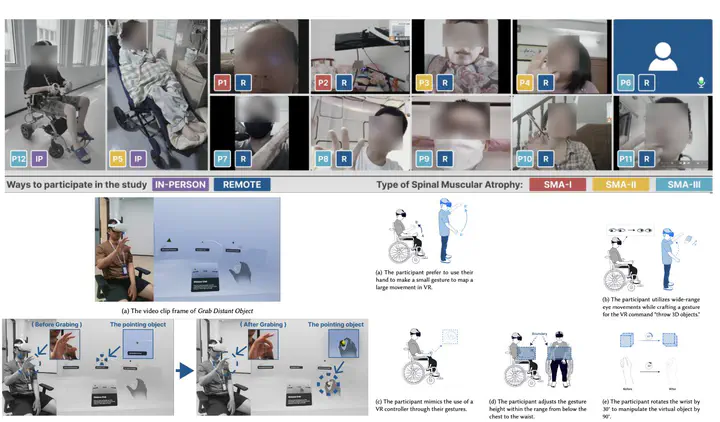Designing Upper-Body Gesture Interaction with and for People with Spinal Muscular Atrophy in VR

Abstract
Recent research proposed gaze-assisted gestures to enhance interaction within virtual reality (VR), providing opportunities for people with motor impairments to experience VR. Compared to people with other motor impairments, those with Spinal Muscular Atrophy (SMA) exhibit enhanced distal limb mobility, providing them more design space. However, it remains unknown what gaze-assisted upper-body gestures people with SMA would want and be able to perform. We conducted an elicitation study in which 12 VR-experienced people with SMA designed upper-body gestures for 26 VR commands, and collected 312 user-defined gestures. Participants predominantly favored creating gestures with their hands. The type of tasks and participants’ abilities influence their choice of body parts for gesture design. Participants tended to enhance their body involvement and preferred gestures that required minimal physical effort, and were aesthetically pleasing. Our research will contribute to creating better gesture-based input methods for people with motor impairments to interact with VR.